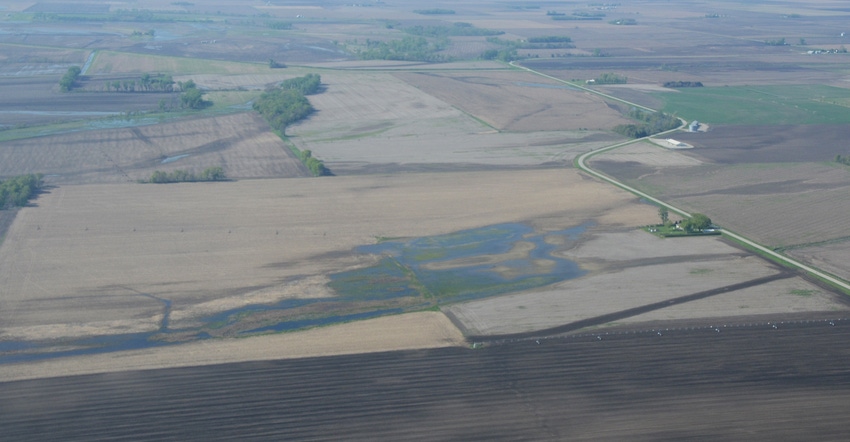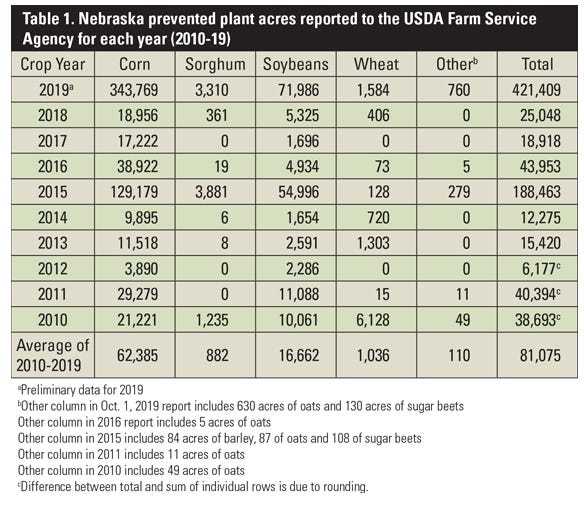October 24, 2019

By Jim Jansen and Jeff Stokes
Nebraska crop producers reported unprecedented levels of prevented plant land for the 2019 growing season. Prevented plant cropland exceeded 420,000 acres across the state (see Table 1 below). Many of the counties suffering extensive damage border major streams, tributaries and rivers — including those along the Missouri, Niobrara and Platte rivers.
Prevented plant acres over prior decade
The 2015 and 2019 growing years marked the highest levels of prevented plant cropland at 188,463 and 421,409 acres, respectively. These unusually high numbers were because of major weather events affecting the state.
Prevented planting filings in 2010, 2011 and 2016 — the next highest years — averaged about 41,000 acres. In the remaining years shown in Table 1, prevented planting ranged from about 6,000 to 25,000 acres.

Major row crops and small grains (corn, sorghum, soybeans and wheat) reported the largest number of prevented plant acreages. Corn typically accounts for more than two-thirds of prevented plant cropland, followed by soybeans making up the majority of the other acres.
Crop insurance policies in Nebraska define periods in the planting seasons when specific crops must be planted. A late-planting window occurs after the regular period, but an operator’s coverage may be reduced.
If an operator cannot plant a crop during the regular or late-planting period because of a qualified event, then the cropland would qualify as prevented plant. An operator receives a portion of the cropland’s crop insurance guarantee on prevented plant acres and may use a cover crop for conservation purposes.
Options for producers with prevented plant cropland
Producers with prevented plant cropland in Nebraska must be aware of their rights and responsibilities for the property. Maintaining good communication with their crop insurance agent, USDA service center and landlord (when applicable) ensures that the appropriate parties stay informed regarding the extent of the issues.
Depending upon extent of the weather-related damages, an operator’s crop insurance would provide the first line of defense against loss of income from low yields or prevented plant acres. The second line of disaster assistance may come from the USDA Farm Service Agency. Subject to program availability and year, USDA may also provide some form of disaster assistance.
Other local, state or federal resources may be available depending on the type of loss suffered and resources appropriated.
Jansen is a Nebraska Extension agricultural systems economics educator; Stokes is a University of Nebraska-Lincoln professor and Hanson-Clegg-Allen chair in agricultural banking and finance.
Source: UNL CropWatch, which is solely responsible for the information provided and is wholly owned by the source. Informa Business Media and all its subsidiaries are not responsible for any of the content contained in this information asset.
You May Also Like




